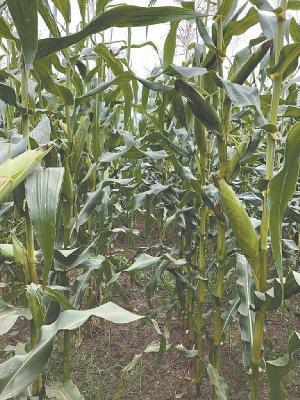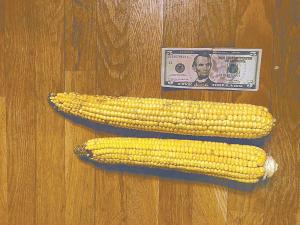2019 - Volume #43, Issue #2, Page #06
[ Sample Stories From This Issue | List of All Stories In This Issue | Print this story
| Read this issue]
Farmer Developed His Own Open-Pollinated Seed Corn
 |
 |
“I grew my own open-pollinated corn on a 50 by 100-ft. plot the first year because I couldn’t justify $300 seed corn any more,” says Dudek. His harvest from the initial plot provided enough seed for 9 acres the second year, and more than 20 acres the third year. In 2019 he’ll have about 150 acres of open-pollinated corn for seed and a neighbor will have additional acres.
In 2018 Dudek sold 800 bags of his Tommy Boy seed for $65 a bag untreated and $75 a bag treated. “I could’ve sold more, so I’m shooting for 1,200 bags of seed for 2019 planting,” he says. “I’ve delivered seed to customers in Iowa and Wisconsin and shipped it to Montana, Virginia and down to Mississippi. Farmers around here are also buying direct from me and I also have dealers in Wisconsin and Michigan.”
Dudek says the main draw for his Tommy Boy variety is low price with the added benefit of non-gmo production, which attracts organic growers. It’s very drought tolerant, has higher protein content, and a longer pollinating window than hybrid seed. Dudek developed Tommy Boy by crossing open-pollinated varieties on his own farm and then selecting plants that showed good standability and decent yield. “It was a lot of failures and dismal results before I got what I wanted, and I’m working on new varieties every year,” Dudek says.
That process finds Dudek bagging, tagging and hand-pollinating about 1,000 corn plants a year to find new varieties. He’s getting advice on breeding and selection techniques from a retired plant breeder and is working with a genetics supplier who has 17 varietal lines. He’ll grow varieties he thinks will perform well on his own farm before releasing them for sale.
He picks the corn in September when ears are about 16 percent moisture, then dries it to 12 1/2 percent without using supplemental heat that might harm germination. His processing operation includes shelling, cleaning, grading, sizing and bagging.
“I do everything that commercial companies do except color sorting, though obviously on a much smaller scale,” Dudek says. “It’s just me and two high school kids now. Hopefully that will continue to expand,” he adds.
So far his customers enjoy a much lower cost for open-pollinated corn and he sees that as a good sign. “My Tommy Boy seed will yield from 100 to 140 bushels per acre and is a good buy if farmers are in the 160 to 180 bushel yield average with conventional varieties,” Dudek says. “It’s also a good product for silage. They can seed it at 32,000 to 34,000 plants per acre for silage and 26,000 to 28,000 for grain. Dryland rates would be 16,000 to 18,000.”
Check out a video of the corn at www.farmshow.com.
Contact: FARM SHOW Followup, Scott Dudek, 10127 Weber Road, Columbus, Mich. 48063 (ph 586 453-4806; dudekseeds@gmail.com; www.dudekseeds.com).

Click here to download page story appeared in.

Click here to read entire issue
To read the rest of this story, download this issue below or click here to register with your account number.




